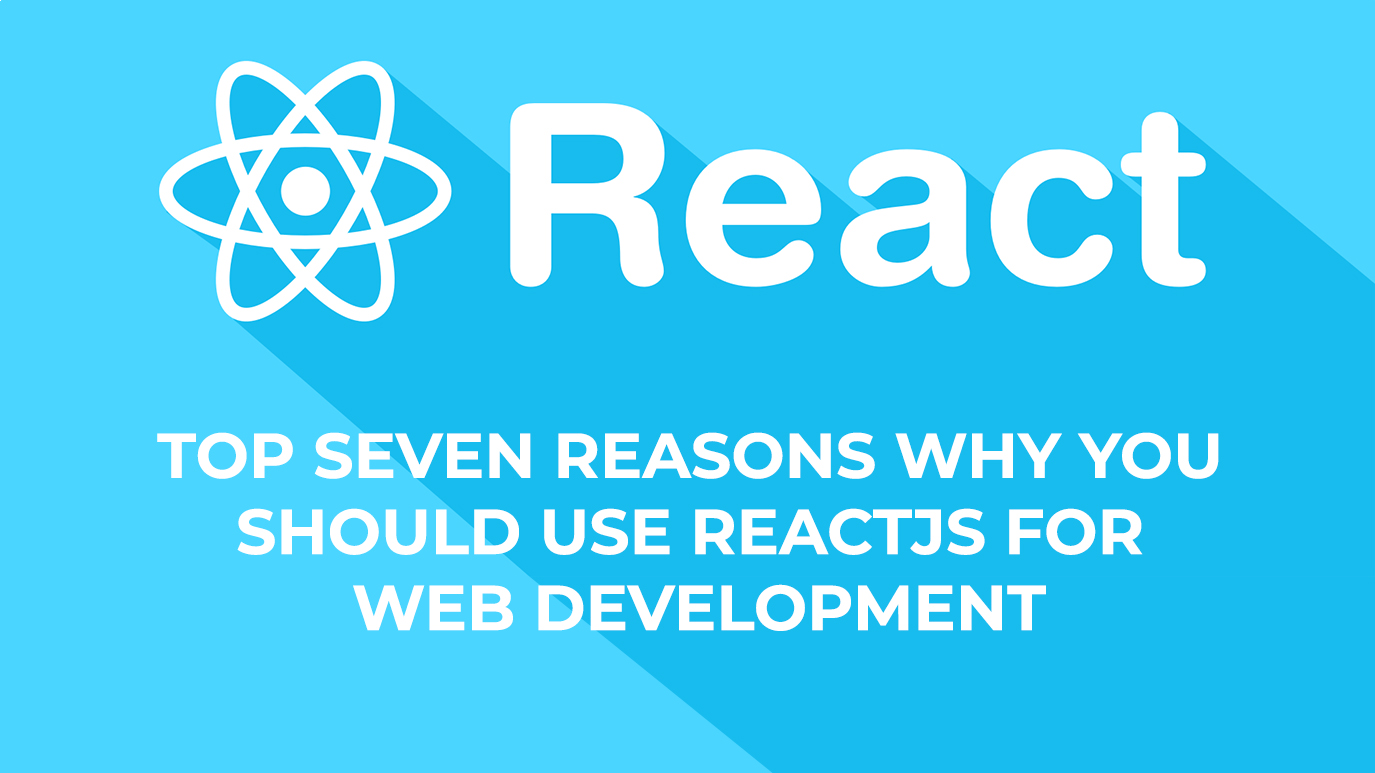Top Seven Reasons Why You Should Use Reactjs For Web Development
 26 November 2021
26 November 2021
 26 November 2021
26 November 2021
The use of frontend frameworks and libraries is critical in the web development process. Using libraries to create high-performing responsive web pages and online applications has become essential. React.js is a JavaScript library created and maintained by Facebook, the social media behemoth. It enables developers to quickly design front-ends for online apps that are simple, fast, and scalable. Approximately 220,000 websites all over the world now use the library.

React JS must have some outstanding benefits if employed by so many organizations, including some of the world's most well-known brands, right? As a result, in today's piece, we'll explain why it's so popular. So, let's get started!
All you need to get started with React JS is a basic understanding of JavaScript. You should, however, continue to learn and practice, just as you would with any other subject. Individual work combined with the use of guides will clearly be sufficient to master it in a short period of time.
Another benefit of using this technology is the ability to quickly prepare and set up a development idea with only one command. People who despise browsing through system settings, as well as juniors who can't handle it right now, will be ecstatic.
React is immensely popular among developers. It was the second most popular framework in 2020, according to Stack-overflow. As a result of this procedure, a beautiful community and environment are developed.
React combines the power of JavaScript with HTML to make it more resilient. To put it another way, it's also known as JSX. Because JavaScript is so widely used, there are literally millions of third-party JavaScript libraries to choose from, making web development a breeze.
When a page is loaded, the DOM (document object model) is created. Any changes to individual element attributes require the entire HTML structure to be loaded. However, this is not the case with React.js.A description that is always loaded is referred to as a virtual DOM. It means that while a web application is updating, you can interact with it. And you'd cause no harm to any of the components. Furthermore, vDOM decreases the time it takes for web pages to load, providing a better user experience.
ReactJS components are self-contained, reusable code chunks. You can give input (props) if necessary, and the component will return a rendered HTML element. You can use them as the main JavaScript function or as a class component, which is a JavaScript class with a render method.
Each React component you create can be reused elsewhere in the app, or wrapper components can be created to offer structure and reusability. You can keep making wrapper components out of existing ones until you reach the root component, which is your application.
Another form of facilitation is clear data flow protocols. In React, data passes from the parent component to the child files nested within it. The props object is used to accomplish this. Whether you're using React-Native for mobile apps or just React JS for web pages, you'll adore the rapid refresh capability. Because Quick Refresh runs as soon as you save your React project in the code editor, you don't have to click the refresh button every time you want to see modifications to your site.
It's time to move on after mastering React JS. React Native lets you make an iOS or Android app. Other mobile apps use the same native API as your JavaScript app. React and React Native have minor differences, but the basic concepts remain the same.
As a result, we get all of JavaScript's and React JS's advantages.
Search engine optimization allows you to succeed in your online business (SEO). React significantly reduces the time it takes for a page to load when compared to other frameworks, which helps businesses achieve the #1 position on Google's Search Engine Result Page.
React JS has gained a lot of traction in web development, and its future looks bright.